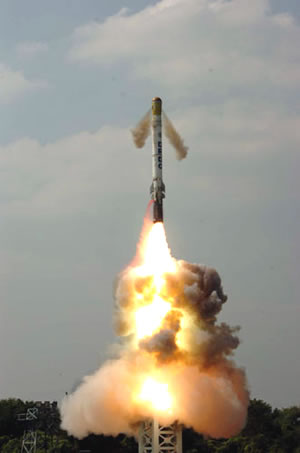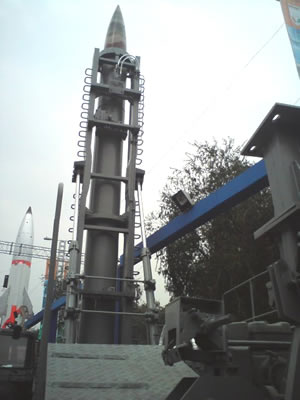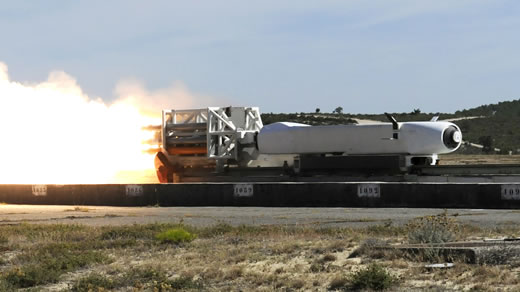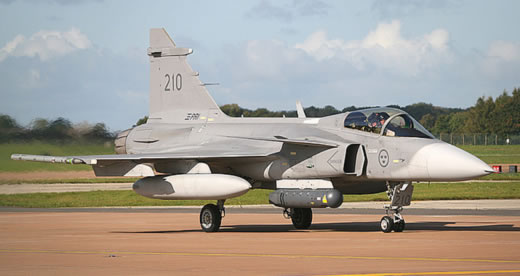One of the new weapon systems on show was the Shaurya missile – a submarine-launched medium-range ballistic missile, capable of carrying one ton of a conventional, or nuclear armed warhead over a range of 750 km. The Shaurya is specially designed for the new Indian submarines, offering India ‘second strike’ capability, significantly adding to the country’s strategic deterrence. Together with the Agni III missile, that has a range of 3500 km, Shaurya could reach all major cities in mainland China, like Beijing, Nanjing and Shanghai, when launched from a submarine off the China coast. It can also cover all the area of Pakistan from off-shore positions in the Arabian Sea. India’s first nuclear-powered submarine, INS Arihant is currently under construction and could be equipped with the new missile. Shaurya was developed in parallel to the K-15 ‘Sagarika’ ballistic missile, built with significant help from Russia.

At Defexpo 2010 the missile was displayed without the container shroud, mounted on a land-mobile erector-launcher. According to V K Saraswat of the India Defense Research and Development Organization (DRDO), the Shaurya can be launched from under water as well as from land. The missile is contained in a gas-filled canister stored inside the submarine’s hull and uses a two-stage solid propelled rocket after launch. To achieve high accuracy, the missile is capable performing trajectory corrections using an on-board inertial navigation system. Described as a ‘hybrid’ missile, Shaurya can shape its descent trajectory, posing a difficult target for missile interceptors. Overall, the missile has an accuracy of 20-30 meters Circular Error Probable (CEP), contributing to effective conventional attack capability, in addition to the nuclear strike option.

In the future, Indian Navy Submarines to Deploy with a mix of Shaurya and Bramhmos missiles. The Shaurya shares the same canisters already used by the Brahmos tactical, supersonic cruise missile, offering the submarine a wide range of surface attack options. Shaurya made the first launch in 2008, nine months after the launch of the K-15. The first Submarine launched Brahmos test is expected by mid-2010.
The supersonic Brahmos will also be a principal missile to equip the six Indian Navy Project 75 submarines, for which the Indians are considering the Russian Amur class sub. Another sub being considered is the German Class-214. Plans to install the missile in the fifth and sixth Scorpene class submarines were cancelled after the Indian Navy decided to equip these subs with air independent propulsion (AIP), thus extending the submarine to its maximum length.

















